第32章 ON SIR ISAAC NEWTON'S OPTICS(2)
What,then,is this secret disposition?Sir Isaac Newton demonstrates that it is nothing more than the density of the small constituent particles of which a body is composed.And how is this reflection performed?It was supposed to arise from the rebounding of the rays,in the same manner as a ball on the surface of a solid body.But this is a mistake,for Sir Isaac taught the astonished philosophers that bodies are opaque for no other reason but because their pores are large,that light reflects on our eyes from the very bosom of those pores,that the smaller the pores of a body are the more such a body is transparent.Thus paper,which reflects the light when dry,transmits it when oiled,because the oil,by filling its pores,makes them much smaller.
It is there that examining the vast porosity of bodies,every particle having its pores,and every particle of those particles having its own,he shows we are not certain that there is a cubic inch of solid matter in the universe,so far are we from conceiving what matter is.Having thus divided,as it were,light into its elements,and carried the sagacity of his discoveries so far as to prove the method of distinguishing compound colours from such as are primitive,he shows that these elementary rays,separated by the prism,are ranged in their order for no other reason but because they are refracted in that very order;and it is this property (unknown till he discovered it)of breaking or splitting in this proportion;it is this unequal refraction of rays,this power of refracting the red less than the orange colour,&c.,which he calls the different refrangibility.The most reflexible rays are the most refrangible,and from hence he evinces that the same power is the cause both of the reflection and refraction of light.
But all these wonders are merely but the opening of his discoveries.
He found out the secret to see the vibrations or fits of light which come and go incessantly,and which either transmit light or reflect it,according to the density of the parts they meet with.He has presumed to calculate the density of the particles of air necessary between two glasses,the one flat,the other convex on one side,set one upon the other,in order to operate such a transmission or reflection,or to form such and such a colour.
From all these combinations he discovers the proportion in which light acts on bodies and bodies act on light.
He saw light so perfectly,that he has determined to what degree of perfection the art of increasing it,and of assisting our eyes by telescopes,can be carried.
Descartes,from a noble confidence that was very excusable,considering how strongly he was fired at the first discoveries he made in an art which he almost first found out;Descartes,I say,hoped to discover in the stars,by the assistance of telescopes,objects as small as those we discern upon the earth.
But Sir Isaac has shown that dioptric telescopes cannot be brought to a greater perfection,because of that refraction,and of that very refrangibility,which at the same time that they bring objects nearer to us,scatter too much the elementary rays.He has calculated in these glasses the proportion of the scattering of the red and of the blue rays;and proceeding so far as to demonstrate things which were not supposed even to exist,he examines the inequalities which arise from the shape or figure of the glass,and that which arises from the refrangibility.He finds that the object glass of the telescope being convex on one side and flat on the other,in case the flat side be turned towards the object,the error which arises from the construction and position of the glass is above five thousand times less than the error which arises from the refrangibility;and,therefore,that the shape or figure of the glasses is not the cause why telescopes cannot be carried to a greater perfection,but arises wholly from the nature of light.
For this reason he invented a telescope,which discovers objects by reflection,and not by refraction.Telescopes of this new kind are very hard to make,and their use is not easy;but,according to the English,a reflective telescope of but five feet has the same effect as another of a hundred feet in length.